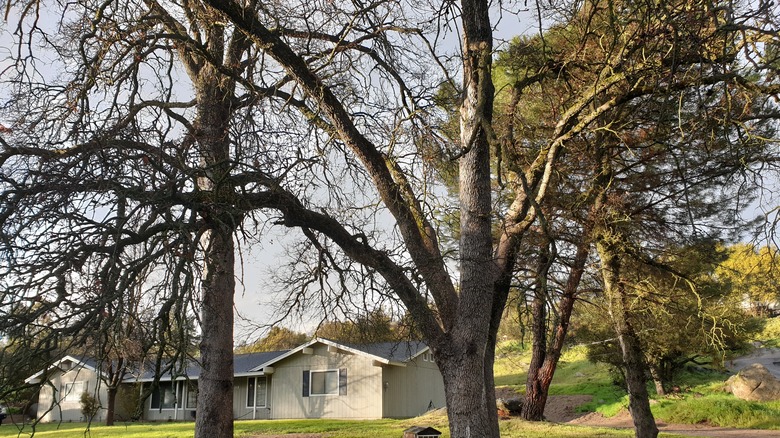What It Means If You Notice Defoliation On Your Oak Trees
Having oak trees on your property has many benefits. These beautiful trees provide long-term shade, while their deep roots help control erosion and improve soil health. They also offer a valuable habitat for wildlife and are a way to attract good insects to your yard. However, you might find your once-vibrant oak trees stripped bare by defoliation, and that is nothing short of disheartening. If you notice defoliation, you may be dealing with a case of a gypsy moth invasion.
Gypsy moths, or rather their caterpillars, have a voracious appetite for tree leaves and can pose a significant threat to the health and beauty of your whole yard. However, before taking action, it's crucial to investigate properly so that you can accurately pinpoint what is causing the defoliation. While gypsy moths are a common culprit, other factors such as diseases and other insects, including various types of beetles, can also defoliate your oak trees.
Identifying gypsy moths
Early detection and intervention are key to effectively managing gypsy moths and protecting your oak trees. Severe infestations in local areas typically occur cyclically every 10 to 15 years and can wipe out tons of trees There are some things you can look for to confirm the presence of gypsy moths, aka spongy moths or Lymantria dispar. First, you may notice the species' hairy caterpillars. These caterpillars have two rows of blue and red spots along their backs. When they reach maturity, they can be 2 to 2.5 inches in length.
You might also see fuzzy beige or tan-colored clumps that are typically found on trunks, branches, or under bark. These sacs contain scores of gypsy moth eggs. If you remove them at this stage, you can save your oak from as many as 1,000 hatched gypsy moth caterpillars from each fuzzy mass. You can find lone sacs attached to a tree, although they can be found in large clusters, too, which can encapsulate thousands of eggs, all ready to hatch together.
What to do when you find gypsy moths defoliating your oak
When growing oak trees, it is vital to take immediate action if you see signs of gypsy moths. First, clean your yard and remove any clutter like dead branches, leaf piles, or old stumps. These can also be places where adult moths lay their eggs. Then carefully look at all parts of the tree to assess the situation's severity. If the defoliation is mild, you may want to address the issue naturally and start with non-chemical methods. Remove as many visible egg sacks and caterpillars as you can. You can try using sticky barrier bands to prevent any more caterpillars from climbing up your trees' trucks to eat their leaves. You can also encourage natural predators like birds such as blue jays, orioles, and cuckoos, which all feed on gypsy moths. Add birdhouses to your garden to attract these types of birds.
However, if your oak tree is heavily impacted, consider chemical options. If the infestation is severe, there are insecticides and canopy sprays available. However, in these cases, it is a good idea to let a professional exterminate the pests before your oak succumbs to them.


